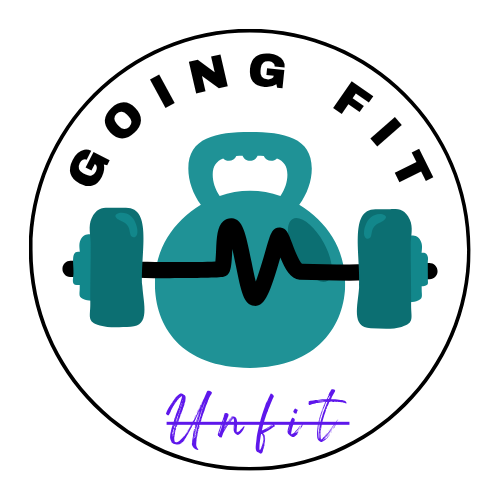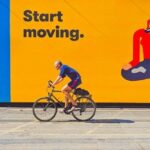I found a lot of people asking questions such as; does cycling burn fat on the stomach, how to lose belly fat cycling, how to lose weight biking, does cycling build muscle, is it possible to build leg muscles cycling, etc.
I know you have undergone the same thinking; does cycling really burn fat and cause weight loss or it builds muscles?
So I researched it online for hours to get to the final answer and now bring this information in an easily accessible form to you. The answer is cycling burn fat and build muscles at the same time.
But it happens at a different pace and under different circumstances. For example in initial stages no matter how hard you work out; there is only weight loss or fat burn will happen.
It is only then the building of newer muscle groups starts at a much slower rate. Which you won’t notice until it outgrows the space left out by the fat cells. This is unlikely unless you cycle for more than transportation, fun and recreational activity.
It is so because muscles are much leaner than fat cells. Not just that they require more energy to sustain which results in even lesser fat.
So yes, you can build those stronger quads just cycling if really want. At the same time, you need not worry as an average biker will only lose more fat then what little muscles he or she grows.
Advantages And Disadvantages of Regular Cycling
If you are riding a bike regularly then you must have known; that its the easiest and most comfortable transportation mode for short distance. It’s cheap, easy to maintain and helps in fitness goals.
On average a person is required to undergo at least 30 minutes of moderate to intense physical activity in a day; just to stay functioning and fit.
Regular physical activity not just makes you appear physically fit; but also helps defend yourself against serious disease.
For being physically fit and energetic, we require to constantly keep a check on bad eating habits and burn fat. Now since not, everyone has time for that extra hour of the gym after exhausting work at the office.
Cycling has tremendous health benefits and also helps build a bond; if done with friends and family. For a perfectly healthy heart, it can be an effective way to improve your cardiovascular fitness.
Read More: Best Hybrid Bikes Under 300 Dollars In 2020 | Review And Comparison
What are the advantages of cycling as exercise?
- Cycling is Good For Your Heart
- Cycling Boost Your Mental Health
- It Burns Calories
- Cycling Reduce Stress
- Cycling Helps Get You Better Sleep
- In Group it helps Make Better Bond
- Cycling is the Best Way For Growing Muscles
- Regular Cycling Boost Your Immune System
- It is a Great Exercise For Diabetic Patient
- Improved lung function
What are the disadvantages of cycling as exercise?
- Prone To Accidents
- Seasonal ( No Protection Against Wind/Rain )
- Hand Eczema/Hand Rashes( If Handlebars Not Cleaned )
- Stress on Neck & Back
What Body Parts Benefit The Most From Cycling?
Cycling is well known to build strength, improve endurance and weight loss. These benefits can be enhanced when combined with other cardio exercises and cross-training workouts.
Knowing the advantages of riding a bike you feel more confident; every time you sit on a bike and your feet start to pedal.
Regular cyclists understand just how effective biking is; when it comes to body transformation. For a regular rider, it’s still one of the big questions; just how beneficial cycling is for different parts of the body.
Luckily biking is one such sport that involves most of the major muscle groups in our body. That results in an overall decrease in body weight as cycling burn fat all around the body.
But its the quadriceps and hamstrings muscles which do the most work when you ride a bicycle.
The other major muscle group that includes are; core, upper body, arms muscles, shoulders and entire lower leg including calf, foot, and ankles. Quadriceps, hamstrings and calf muscles then contract in a sequence to form pedaling action.
Here the core is responsible to stabilize your body and help achieve overall balance. Similarly, the upper body supports yourself on the bike; while your back helps maintain a good sitting posture.

We Say Cycling Burn Fat – But How?
Almost everyone agrees that aerobic exercise such as cycling helps shed that extra weight. But I wonder how does it actually happen? So once I asked this question in a fitness discussion.
But the answer I got was disappointing. Rather than going with the usual answer like; “Cycling burn fat like any other exercise does” I did my own research.
In human body fat is stored in the form of fat cells that make up the adipose tissue.
A healthy person has around 8 million of these tissues which don’t ever go away. In fact, in certain situations, they are vital for our survival. So during weight loss, we only shrink the fat deposits in these adipose tissues.
As you eat a part of it is stored in these cells and they grow.
But when we fast or do exercise our body burns fat to meet its 45-60% of its energy requirements. The rest is met by the glycogen reserves.
This happens in the form of injecting free fatty acids and glycerol into the bloodstream.
They then picked up by the LDLs and VLDLs break up into acetyl sugar by a process named beta-oxidation. The obtained sugar is then again converted down to useful energy.
When biking our body first burns more glycogen reserves in the first 30 minutes. This happens because glycogen reserves are easily accessible to different muscles group.
Beyond that your blood sugar level will drop; which then triggers a chain reaction that breaks fat into useful energy. Further, your body tries to replenish it’s glycogen stores; and trigger a process called Gluconeogenesis.
This can be felt in the form of the after-burn effect. It is when most of the fat deposits are converted to glycogen reserves; unless you quickly eat or replenish your glucose level.

How Long Do I Need To Cycle To Burn Fat?
As a responsible person, we have a love-hate relationship with the fat. We love that fat helps us survive in times of emergency, or it provides natural protection against cold.
But at the same time, we don’t want too much fat on our waist, thigh and other body parts. Exercising routinely then seems to be the ultimate guide to weight loss. But it feels too frustrating and hard, especially for beginners.
Thus cycling becomes your go-to aerobic exercise for weight loss. Since its low impact and burns a ton of calories. You seem to know just how much do you need to ride to burn 1 pound fat (0.45 kg).
Unfortunately, weight loss is not an exact science; especially with cycling where your speed and effort continuously vary. But as a rough guide, you can always calculate the average fat burn by average distance traveled.
Now since one pound of body fat equals 3500 calories. And an average person who weighs 170-180 lbs riding at moderate speed burns 600-650 calories per hour.
By simple calculation, we know it takes about 5.83 hours of continuous cycling to burn 1 pound body fat ( 0.45 kg ) or 5 hours 49 minutes and 48 seconds to be precise.
Now suppose on a flat surface/paved road your average bike speed is 12 km/hr. You need to keep biking for the next 70 km to burn that 1 kg of fat you grow by just sitting.
You can speed up this process by either pushing too hard on your speed. Including strength training as part of your exercise routine or simply cycling while you are at fast.
For example in the morning before breakfast. Just by following this alone you can burn 15% more fat.
Conclusion – does Cycling burn fat or build muscle?
The key to losing weight is being consistent with your workout routine. There are no shortcuts when shedding that extra kilo. As cyclists, you can give your metabolism a boost causing more fat burn.
Being a low-intensity exercise you can achieve your results enjoying your ride or while commuting.
Biking is a great exercise that not just burn fat but help build newer muscles. This means if you do it enough consistently over the years; chances are you can have your own hulk moment.
But unfortunately for a common biker, it never goes beyond burning fat. And if any muscles built that are too lean to be physically visible.
General Disclaimer: This article is for general information only and does not intended to replace an informed medical opinion. You should not use this information to diagnose or treat a health problem. Always consult your doctor before changing your diet, sleep habits, dietary supplements, or a new exercise routine.
Also Read,
Is Cycling With A Backpack Bad For Your Back?









Leave a Reply